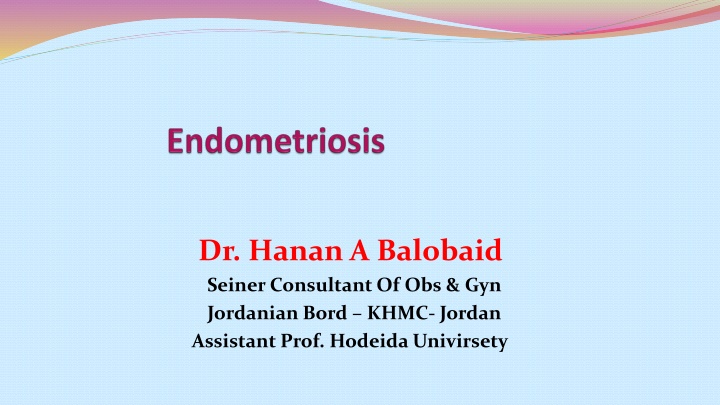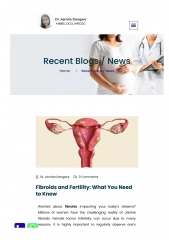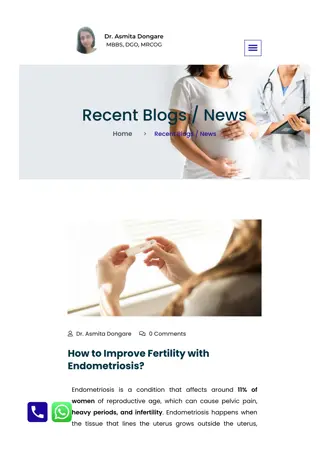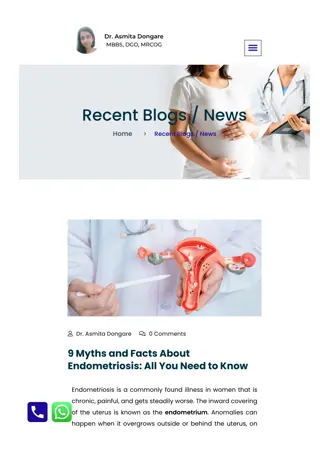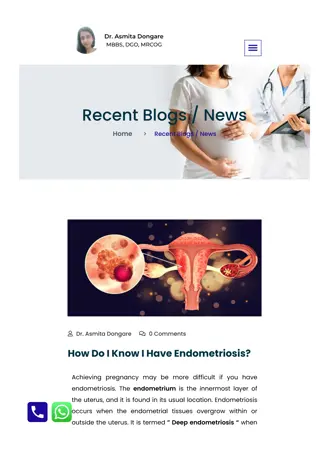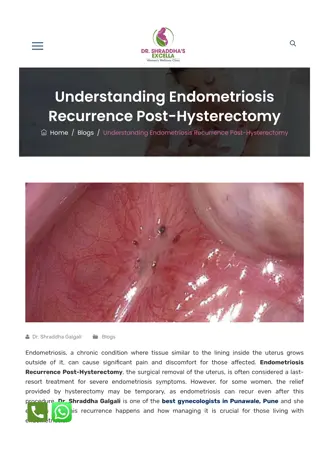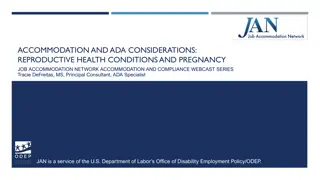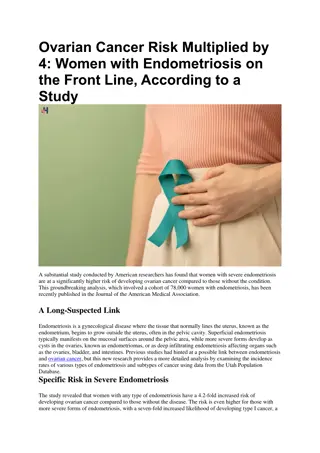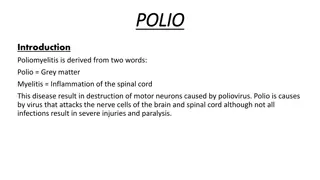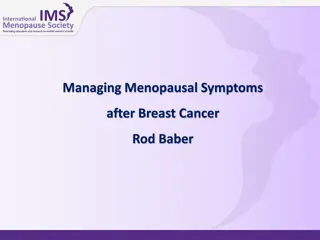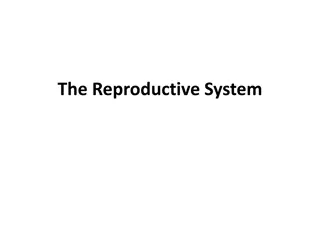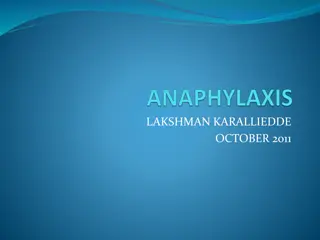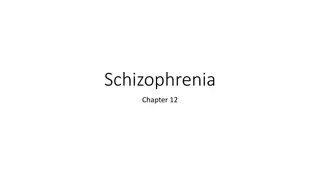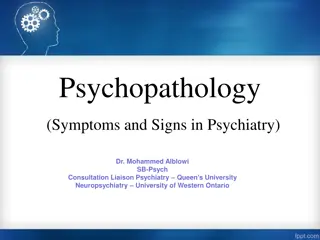Symptoms and Management of Endometriosis
Endometriosis presents with symptoms like dysmenorrhea, dyspareunia, and defecatory pain. Explore how these symptoms manifest and learn about effective management strategies for this condition.
Download Presentation

Please find below an Image/Link to download the presentation.
The content on the website is provided AS IS for your information and personal use only. It may not be sold, licensed, or shared on other websites without obtaining consent from the author.If you encounter any issues during the download, it is possible that the publisher has removed the file from their server.
You are allowed to download the files provided on this website for personal or commercial use, subject to the condition that they are used lawfully. All files are the property of their respective owners.
The content on the website is provided AS IS for your information and personal use only. It may not be sold, licensed, or shared on other websites without obtaining consent from the author.
E N D
Presentation Transcript
Dr. Hanan A Balobaid Seiner Consultant Of Obs & Gyn Jordanian Bord KHMC- Jordan Assistant Prof. Hodeida Univirsety
SYMPTOMS The endometriosis can be presented with classic Triad ( dysmenorrhea, dyspareunia, dyschezia ) , Secondary dysmenorrhea Pain (cyclic and non-cyclic) , Premenstrual and postmenstrual spotting (in about 20%). ,Infertility,
Dysmenorrhea Cyclic pain with menstruation is noted commonly in women with endometriosis. Typically, endometriosis-associated dysmenorrhea precedes menses by 24 to 48 hours and is less responsive to nonsteroidal anti-inflammatory drugs (NSAIDs) and combination oral contraceptives (COCs). The is pain is thought to be more severe in comparison with primary dysmenorrhea.
Dyspareunia Endometriosis-associated dyspareunia is most often related to rectovaginal septum or uterosacral ligament disease and is less commonly associated with ovarian involvement During intercourse, tension on diseased uterosacral ligaments may trigger this pain .
Defamatory Pain Painful defecation develops less commonly than the other types of pelvic pain and typically reflects rectosigmoid involvement with endometriotic implants Symptoms may be chronic or cyclic, and they may be associated with constipation, diarrhea, or cyclic hematochezia .
Dysuria Although less frequent symptoms of endometriosis, painful urination and cyclic urinary frequency and urgency may be noted in affected women. Endometriosis may be suspected if these symptoms are concurrent with negative urine culture results . If hematuria or significant bladder symptoms are noted, cystoscopy may be performed for further evaluation and diagnosis confirmation.
Noncyclic Pain Chronic pelvic pain is the most common symptom associated with endometriosis. Approximately 40 to 60 percent of women with chronic pelvic pain are found to have endometriosis at the time of laparoscopy If the rectovaginal septum or uterosacral ligaments are involved with disease, pain may radiate to the rectum or lower back. Alternatively, pain radiating down the leg and causing cyclic sciatica may reflect posterior peritoneal or direct sciatic nerve involvement .
Infertility The incidence of endometriosis in women with subfertility is 20 to 30 percent The incidence of endometriosis in women with subfertility is 20 to 30 per, Adhesions are one intuitive explanation related infertility. These may impair normal oocyte pick-up and transport by the fallopian tube. defects include perturbations in follicle development, ovulation, sperm function, embryo quality and development, and implantation
Physical Examination Visual Inspection For the most part, endometriosis is a disease confined to the pelvis. Accordingly, abnormalities during visual inspection are often lacking. Some exceptions include endometriosis within an episiotomy scar or surgical scar, most often within a Pfannenstiel incision Rarely, endometriosis may develop spontaneously within the perineum or perianal region .
Speculum Examination blue or red powder-burn lesions may be seen on the cervix or the posterior fornix of the vagina . These lesions may be tender or bleed with contact
Bimanual Examination Uterosacral ligament nodularity and tenderness may reflect active disease or scarring along the ligament. An enlarged, cystic adnexal mass may represent an ovarian endometrioma, which may be mobile or adhered to other pelvic structures. Bimanual examination may reveal a retroverted, fixed, tender uterus, or a firm, fixed posterior cul-de-sac.
Laboratory Testing Serum CA125 Cancer antigen 19-9 (CA 19-9), Serum placental protein 14 (PP14; glycodelin-A Other suspected biomarkers include VEGF [vascular endothelial G F ] thyroid stimulating hormone (F SH), and cytokines such as interleukin 6 (IL-6) or IL-8.
Diagnostic Imaging Sonography Both transabdominal and transvaginal (TVS) sonographic Computed Tomographic (CT) Scanning Magnetic Resonance Imaging Diagnostic Laparoscopy The is tool is the primary method used for diagnosing endometriosis Laparoscopic findings are variable and may include discrete endometriotic lesions, endometrioma, and adhesion formation.
Symptoms ,physical examination and imaging (US,CT,MRI) can give suspicion but Definitive Diagnosis only by : 1-Direct visualization (via laparotomy or laparoscopy) 2-Histologic and gross findings consistent with endometrial tissue
The treatment of endometriosis is dependent on (a) the severity of symptoms, (b) the extent of disease, (c) the location of disease, (d) the patient's desire for pregnancy, and (e) the age of the patient.
Expectant Management Medical therapy Progestins Levonorgestrel-releasing intrauterine device Danazol GnRH analogues Mifepristone (RU486; Mifeprex) Surgical therapy (laparoscopy or laparotomy) Conservative: retains uterus and ovarian tissue Definitive: removal of uterus and possibly ovaries Combination therapy Preoperative medical therapy Postoperative medical therapy
Presacral Neurectomy For some women, transection of presacral nerves lying within the interiliac triangle may provide relief of chronic pelvic pain Laparoscopic Uterine Nerve Ablation There is no evidence that laparoscopic uterine nerve ablation (LUNA) is effective in treating endometriosis-related pain
Differential Diagnosis Gynecologic Pelvic inflammatory disease Tub ovarian abscess Salpingitis Endometritis Hemorrhagic ovarian cyst Ovarian torsion Primary dysmenorrhea Degenerating leiomyoma Ectopic pregnancy Other pregnancy complications
Nongynecologic Interstitial cystitis Chronic urinary tract infection Renal calculi Inflammatory bowel disease Irritable bowel syndrome Diverticulitis Mesenteric lymphadenitis Musculoskeletal disorders
